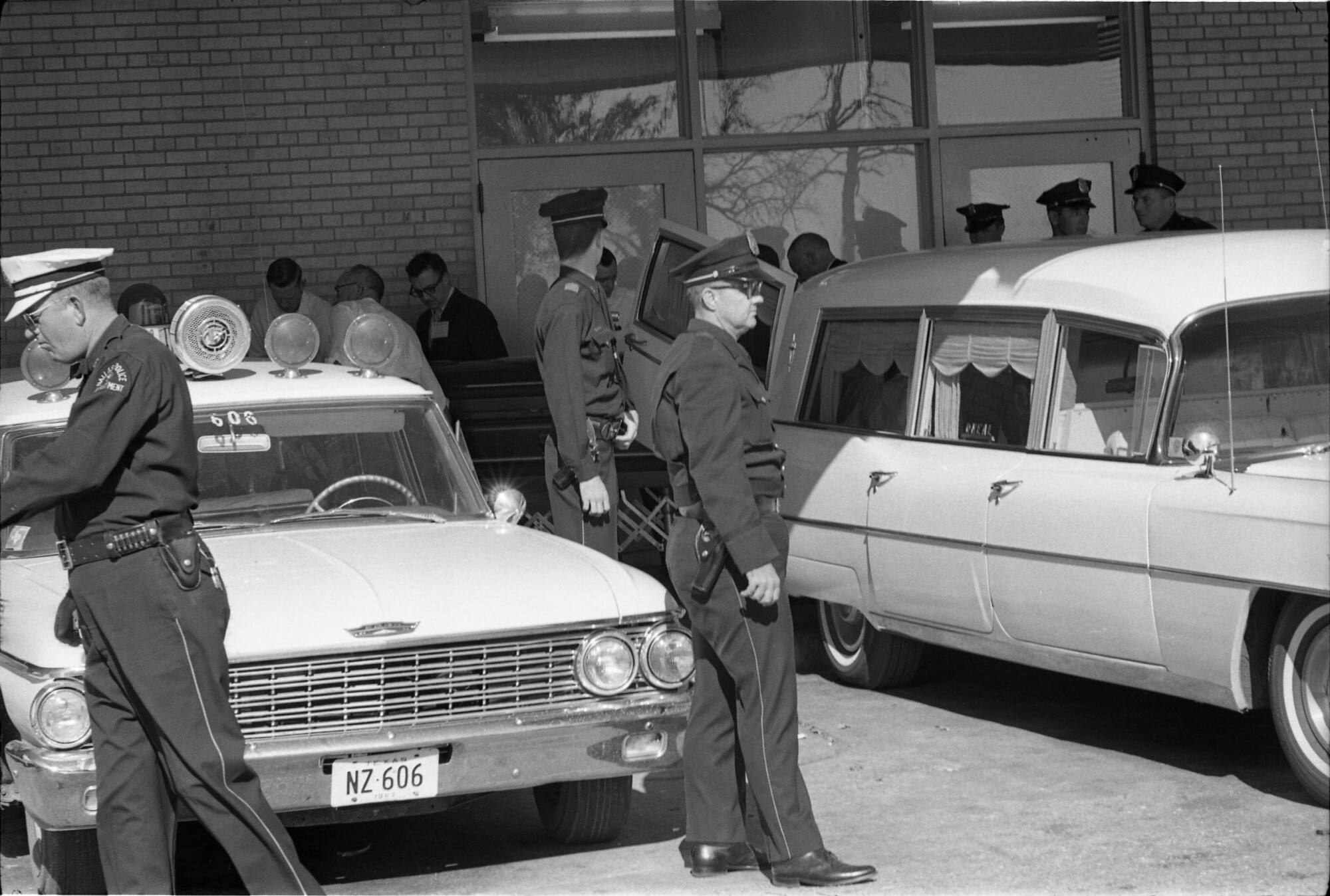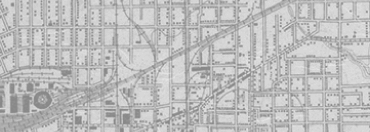


Back
Image of casket being delivered to Parkland Hospital
Original 35mm black and white negative most likely taken by Dallas Times Herald staff photographer Bob Jackson. This image shows a casket from the Oneal Funeral Home being delivered to Parkland Hospital. Oneal driver Aubrey Rike (with dark hair) assists, followed by Dallas Morning News columnist Tony Zoppi (in dark suit). Oneal attendant Dennis "Peanuts" McGuire stands behind Zoppi.
Image of casket being delivered to Parkland Hospital
11/22/1963
Film
15/16 x 1 7/16 in. (2.4 x 3.6 cm)
Dallas Times Herald Collection/The Sixth Floor Museum at Dealey Plaza
1989.100.0019.0004
Dallas Morning News columnist Tony Zoppi hoped that helping carry a casket into Parkland Hospital would be his opportunity to get close to the president. However, once inside, Secret Service agents took over and Zoppi was not allowed inside Trauma Room One. Undeterred, Zoppi found a telephone and called the Morning News' city desk. As he recalled in his 1992 oral history with the Museum, "John King answered the phone.... I said, 'The president is dead.' Now, he had all his top reporters out there, and here I am a nightclub reporter. His reaction was, 'How the hell do you know?' I said, 'Because I just carried in his casket.'" - Stephen Fagin, Curator
This casket, an expensive 800 pound mahogany-colored Britannia model manufactured by the Elgin Casket Company, has had an interesting history. It carried President Kennedy to Love Field for the return to Washington, but a handle was damaged in the narrow jet doorway. This is the casket TV viewers saw being taken off of Air Force One at Andrews Air Force Base a few hours later. Vernon Oneal eventually asked the White House for the casket to be returned or to be paid for. He received a check; White House personnel had learned Oneal planned to exhibit it in his Dallas funeral home. The casket eventually wound up in the basement of the National Archives when Bobby Kennedy was asked what he wanted done with it. Fearing exploitation if the casket got into the public domain, a possibility noted by former Dallas mayor Earle Cabell, Bobby ordered it destroyed. On February 18, 1966, a military plane dumped the casket off the Delaware-Maryland coast in a former ammunition dump in 9000 feet of water. - Gary Mack, Curator

Image of casket being delivered to Parkland Hospital
Original 35mm black and white negative most likely taken by Dallas Times Herald staff photographer Bob Jackson. This image shows a casket from the Oneal Funeral Home being delivered to Parkland Hospital. Oneal driver Aubrey Rike (with dark hair) assists, followed by Dallas Morning News columnist Tony Zoppi (in dark suit). Oneal attendant Dennis "Peanuts" McGuire stands behind Zoppi.
Image of casket being delivered to Parkland Hospital
11/22/1963
Police
Photographs
Hearse
Casket
Jackson, Bob
McGuire, Dennis "Peanuts"
Rike, Aubrey
Zoppi, Tony
Parkland Hospital
Dallas Police Department
Oneal Funeral Home
Dallas Times Herald
Dallas
Film
15/16 x 1 7/16 in. (2.4 x 3.6 cm)
Dallas Times Herald Collection/The Sixth Floor Museum at Dealey Plaza
1989.100.0019.0004
Dallas Morning News columnist Tony Zoppi hoped that helping carry a casket into Parkland Hospital would be his opportunity to get close to the president. However, once inside, Secret Service agents took over and Zoppi was not allowed inside Trauma Room One. Undeterred, Zoppi found a telephone and called the Morning News' city desk. As he recalled in his 1992 oral history with the Museum, "John King answered the phone.... I said, 'The president is dead.' Now, he had all his top reporters out there, and here I am a nightclub reporter. His reaction was, 'How the hell do you know?' I said, 'Because I just carried in his casket.'" - Stephen Fagin, Curator
This casket, an expensive 800 pound mahogany-colored Britannia model manufactured by the Elgin Casket Company, has had an interesting history. It carried President Kennedy to Love Field for the return to Washington, but a handle was damaged in the narrow jet doorway. This is the casket TV viewers saw being taken off of Air Force One at Andrews Air Force Base a few hours later. Vernon Oneal eventually asked the White House for the casket to be returned or to be paid for. He received a check; White House personnel had learned Oneal planned to exhibit it in his Dallas funeral home. The casket eventually wound up in the basement of the National Archives when Bobby Kennedy was asked what he wanted done with it. Fearing exploitation if the casket got into the public domain, a possibility noted by former Dallas mayor Earle Cabell, Bobby ordered it destroyed. On February 18, 1966, a military plane dumped the casket off the Delaware-Maryland coast in a former ammunition dump in 9000 feet of water. - Gary Mack, Curator









